We’re continuing our series on CSI. In this post, we will look at different types of evidence you might write into a crime scene in your work. All of this information and more can be found in my book Fight Write, Round Two: Crafting Chaos, Combat and Crime. Give it a look-see!
Types of Evidence

There are five types of evidence: real, documentary, demonstrative, testimonial and digital. Real evidence is physical evidence, something you can physically inspect. All of the examples we will look at today are physical evidence.
A Few Types of Physical Evidence
Footprints
Footprints fall under the category of both impression evidence and biological evidence. As biological evidence, they can tell a bit about the person’s stature, weight, gait, gender or possible deformity. In other words, if your character has a limp or drags a foot, that will be evident. Footprints can also suggest if something was carried. The tread of the shoe can also be vital evidence. Shoe prints may be left in blood, on a soft surface or discovered though the use of alternate light sourcing or chemicals. Foot/shoe prints are such vital evidence, there is actually such a thing as forensic podiatry.
Fingerprints
Most readers will understand the concept of fingerprint evidence. And because there’s no hard and fast rule for how long latent fingerprints last, (the kind you can’t see without the aid of alternate light sources etc) you have a lot of leeway in writing them in your work. The problem with fingerprint evidence, that can add an interesting wrinkle in your plot line, is that there is no proof that all fingerprints are unique. It can also be hard to match to a finger to a print or one print to another. One study showed fingerprint analysis can be wrong .1% of the time. That may not seem like a lot until until you consider that, statistically, .1% would be 2,000 people currently in the US prison system because of an error of analysis. Also, just another little factoid, some people, because of a genetic defect, lack fingerprints.
Blood
Blood is biological evidence that can be classified into three stain categories: passive, transfer and impact. Passive stains generally result from gravity’s effect on a body ie blood drops, pools and flows. Transfer stains result from objects coming into contact with the blood. Blood footprints and fingerprints are both transfer stains. Impact stains are the result of blood flying through the air as spattering. Impact stains can also be arterial spurts, gushes and splashes. While the DNA gathered from blood is crucial evidence, it doesn’t automatically tell you who committed a crime. DNA doesn’t identify a person on its own. It can only identify a person if that person’s DNA is catalogued somewhere such as CODIS – the FBIs Combined DNA Index System. But, even if that person’s DNA is in the system, there will be no address attached to the file.
Other Biological Evidence
Other than blood, types of biological evidence are teeth, bone, sweat, saliva, urine, semen, as well as bodily tissue. In order to find bodily fluids that are not immediately visible, alternate light sources or chemicals might be used. Single wavelength light can highlight biological fluids. Luminol will only react to blood. BCIP (5-bromo-4-chloro-3-indolyl phosphate) reacts only with semen.
Trace Evidence
Trace evidence is small bits of evidence transferred during the crime. The most common types of trace evidence are hairs, fibers, glass, plant material, paint chips, soil and fingerprints. The three most common are fibers, hair and glass.
Hair
For hair to be used for DNA evidence, the more hair the better. For the most accurate testing, 6-10 hairs are needed with the root in tact. However, in 2019 there was a breakthrough in gleaning DNA from hair without the follicle in tact. How accessible that technology is I don’t know. But, it’s out there. Hair is especially helpful as trace evidence is if a suspect is already in custody. Hair from the scene and from the suspect can be compared. Like any DNA evidence, hair shows that someone was at a crime scene. It is not proof that the person was at the crime scene when the crime happened. Unfortunately no DNA evidence is 100% reliable not even when the FBI tests it! The FBI acknowledged that its testimony on microscopic hair analysis was flawed in at least 90% of cases. Ouch!
Fibers
Fibers found at a crime scene can be compared to fibers found on the suspect or in a place the suspect frequents. It is less reliable than trace evidence such as hair. Also, it’s not uncommon for fibers to become airborne. If Albert is sitting next to Bob on a train, fibers from Albert’s sweater, or carpet fibers from Albert’s home stuck to his pants, can be transferred to Bob. If Bob commits a crime, Albert’s clothing and carpet fibers may be found at the scene. That’s not to say fibers can’t be valuable evidence. Carpet fibers were instrumental in convicting serial killer Randy Kraft.
Firearms Evidence
If a firearm was used in a crime, a lot of valuable evidence can be left behind. The bullet itself can have markings peculiar to the gun from which it was discharged. However, the barrel of the gun can be tampered with to keep it from being matched with a bullet. The bullet casing can also be valuable evidence as its caliber will give information about the gun used. Ballistic evidence such as gun powder residue, angle of trajectory, distance from the target, bullet entrance and exit wounds, and damage — can be used to reconstruct the events of the crime and possibly negate a suspect’s version of events. And the gun itself, if it is in custody, can corroborate or negate an alibi. If Bob says that his gun discharged accidentally, the trigger pressure can be analyzed to verify that. Yes, you can measure the pressure on the trigger. According to firearmshistory.blogspot.com, to measure the trigger pull force, the tester cocks the weapon (making sure it is unloaded first), simply fastens the hook end to the trigger and pulls the gauge backwards until the trigger releases the firing mechanism.
Drugs
Drugs at the crime scene can be valuable in helping piece together what took place as well as a possible motive for the crime. Drug evidence may be in the form of plant material, solids such as meth, cocaine, crack cocaine, and pharmaceuticals, liquids or paraphernalia like smoking devices, straws, or spoons.
If you are writing a crime scene, step onto the page. Walk around. Look at the scene as an investigator would. Find the evidence. In the next post, we will look at the correct way to collect it. Until then, here’s how to cast an impression of a shoe print.




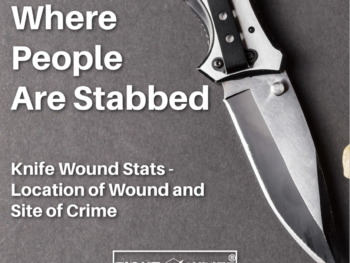
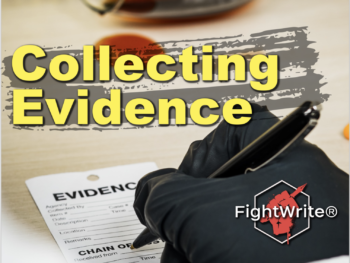
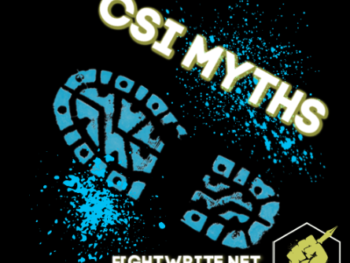
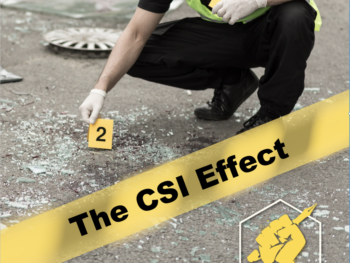
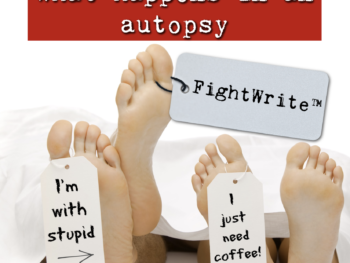

This web site is really a walk-through for all of the info you wanted about this and didn’t know who to ask. Glimpse here, and you’ll definitely discover it.
I’m still learning from you, but I’m trying to reach my goals. I definitely enjoy reading everything that is posted on your site.Keep the tips coming. I loved it!
I would like to thnkx for the efforts you have put in writing this website. I am hoping the same high-grade website post from you in the upcoming also. Actually your creative writing skills has inspired me to get my own blog now. Really the blogging is spreading its wings quickly. Your write up is a good example of it.
I will right away grasp your rss as I can not in finding your email subscription hyperlink or e-newsletter service. Do you have any? Please let me know in order that I could subscribe. Thanks.
I got what you intend,saved to fav, very nice web site.
I am perpetually thought about this, appreciate it for putting up.
I’d have to examine with you here. Which isn’t one thing I normally do! I enjoy studying a post that can make folks think. Also, thanks for permitting me to remark!
Regards for helping out, excellent info .
Howdy, i read your blog occasionally and i own a similar one and i was just wondering if you get a lot of spam remarks? If so how do you reduce it, any plugin or anything you can advise? I get so much lately it’s driving me insane so any support is very much appreciated.
Good write-up, I¦m normal visitor of one¦s website, maintain up the nice operate, and It is going to be a regular visitor for a long time.
I conceive this internet site has some real wonderful info for everyone. “The best friend is the man who in wishing me well wishes it for my sake.” by Aristotle.
You can certainly see your skills in the work you write. The sector hopes for more passionate writers like you who are not afraid to mention how they believe. Always follow your heart.
Hmm it looks like your site ate my first comment (it was extremely long) so I guess I’ll just sum it up what I wrote and say, I’m thoroughly enjoying your blog. I as well am an aspiring blog writer but I’m still new to everything. Do you have any points for rookie blog writers? I’d certainly appreciate it.
I relish, result in I discovered exactly what I used to be looking for. You have ended my 4 day long hunt! God Bless you man. Have a great day. Bye
I am glad to be one of the visitors on this outstanding web site (:, thankyou for posting.
Hey there! Do you know if they make any plugins to safeguard against hackers? I’m kinda paranoid about losing everything I’ve worked hard on. Any tips?
Lovely just what I was looking for.Thanks to the author for taking his clock time on this one.
Very interesting subject , thanks for posting.
Awesome blog you have here but I was curious if you knew of any community forums that cover the same topics discussed here? I’d really like to be a part of group where I can get suggestions from other knowledgeable individuals that share the same interest. If you have any recommendations, please let me know. Appreciate it!
I got what you intend,saved to my bookmarks, very nice internet site.
hi!,I love your writing very a lot! percentage we communicate more about your article on AOL? I require a specialist on this space to solve my problem. May be that’s you! Taking a look forward to look you.
Thanks for sharing excellent informations. Your web-site is so cool. I am impressed by the details that you have on this site. It reveals how nicely you perceive this subject. Bookmarked this web page, will come back for extra articles. You, my friend, ROCK! I found just the info I already searched everywhere and just could not come across. What an ideal website.
A lot of thanks for every one of your work on this web site. Betty delights in engaging in investigations and it’s really easy to see why. Many of us learn all about the compelling medium you present sensible tips and tricks on your blog and boost contribution from other individuals on that matter then our own simple princess is now discovering a lot. Have fun with the rest of the year. You are doing a great job.
I haven?¦t checked in here for a while since I thought it was getting boring, but the last several posts are good quality so I guess I?¦ll add you back to my daily bloglist. You deserve it my friend 🙂